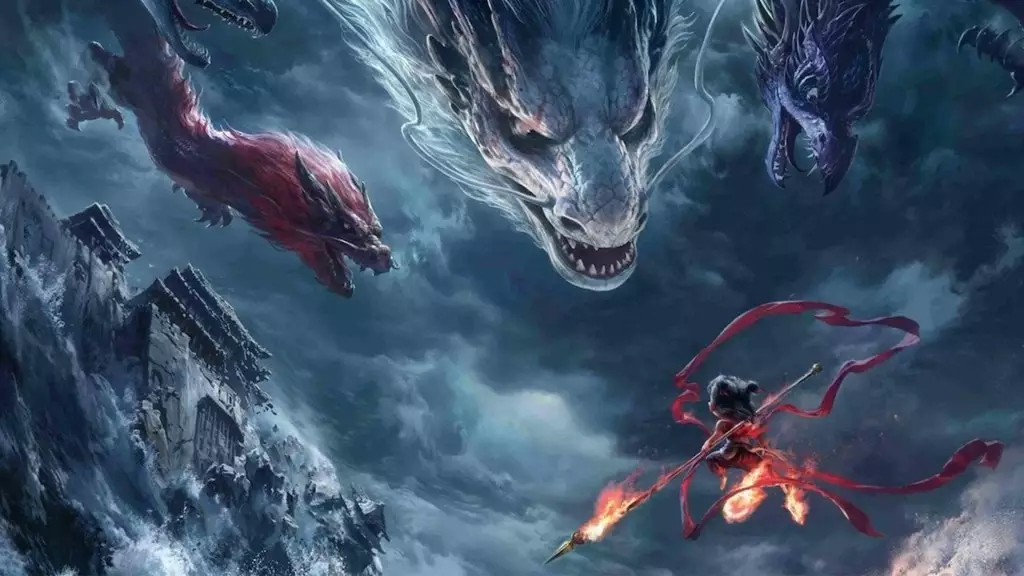In a remarkable achievement that highlights the global influence of Chinese cinema, “Ne Zha 2” has solidified its place in history as the fifth highest-grossing film of all time, surpassing even the iconic “Star Wars: The Force Awakens.” As the film races past RMB 14.86 billion (approximately $2.054 billion), its staggering success showcases the power of animation, which has often been underestimated in mainstream cinema. This animated sequel’s ability to break box office records illustrates not just the appeal of its storytelling, but also the cultural resonance it holds within and outside of China. With additional revenues from international markets, the film’s global earnings are poised to exceed RMB 15.2 billion ($2.1 billion) by the end of its theatrical run—a testament to the shift in dynamics within the box office landscape.
Chinese films have gained significant traction over the last decade, and “Ne Zha 2” is emblematic of this trend. Its success provides insights into shifting viewer preferences as audiences increasingly lean towards stories that reflect their own culture while also appealing to universal themes of heroism and friendship. This blend of local storytelling combined with universal appeal is a blueprint that the global film industry could learn from.
The Power of IMAX
IMAX theatre screening formats played a pivotal role in “Ne Zha 2’s” box-office performance, generating over $155 million globally. Notably, $151.6 million of that impressive figure comes from China alone—forming a significant part of the film’s total revenues. This performance marks it as the sixth biggest IMAX release, emphasizing how technologically enhanced viewing experiences can elevate a film’s financial outcome. The numbers are not just a reflection of the film’s artistic merit; they also suggest that enhanced viewing formats can play an influential role in attracting audiences to cinemas.
In the UK, the film saw an unprecedented 35% of its launch come from IMAX screenings, setting a record for the largest local-language opening in that market. As viewing habits continue to evolve, it is evident that the industry’s future may lie in providing technologically immersive cinematic experiences that appeal to audiences globally.
Mickey 17: A Slow Burn
Warner Bros.’ “Mickey 17” has also emerged as a noteworthy player in the weekend box office, accumulating $90.5 million globally following its second installment in wide release. The international box office total now stands at $57.2 million, with South Korea leading the charge. While its performance seems solid, it is essential to recognize it as a slow burn rather than a blockbuster phenomenon. It mirrors the current trend of films that take time to build their audiences, relying heavily on word-of-mouth marketing and critical acclaim.
As Bong Joon-ho continues to make waves with this release, it’s captivating to see how his unique storytelling shapes audience perceptions across various markets. The film, attracting audiences through its narrative depth and visual splendor, highlights a larger trend in modern cinema where movies may not initially demolish box office expectations but instead develop a more sustainable longevity in the cinematic landscape.
Disney’s Dominance and Diversification
In stark contrast to the slower burn of “Mickey 17,” Disney has successfully crossed the $1 billion mark globally this year, further solidifying its reign in the film industry. The powerhouse continues to churn out a diverse array of titles, with “Captain America: Brave New World” now amassing a hefty $388.6 million globally. This demonstrates the strength of franchise films in today’s cinema—drawing audiences drawn to familiar narratives. However, Disney’s focus on expanding its IP with releases like the live-action “Snow White” showcases its commitment to diversifying its offering.
Yet, one must wonder how sustainable this level of dominance is. The market shows signs of fatigue with oversaturation of franchises. It is essential for Disney to innovate continually and explore unique stories, much like the narrative-driven success seen in animated films. In an entertainment landscape overflowing with content, originality is the key to lasting relevance.
The New Wave of International Cinema
Meanwhile, a new wave of international cinema is emerging, adding complexity to the global film landscape. Universal’s “Bridget Jones: Mad About the Boy” continues to resonate internationally, achieving profitability in a manner reminiscent of its predecessors. This film, along with newcomers like “Black Bag,” signals a bolstered international presence that is ripe for exploration. As various markets become increasingly interconnected, the ability for films to succeed is not merely dictated by Hollywood standards but is also reflective of regional tastes that vary significantly.
The current state of the box office is a fascinating interplay of innovation, culture, and technology. As we witness records being shattered and new trends emerging, the global film industry is navigating a landscape that’s continuously shifting. While traditional blockbuster measures remain lucrative, films that harness unique narratives and embrace new forms of viewing are carving their own paths to success.


Leave a Reply